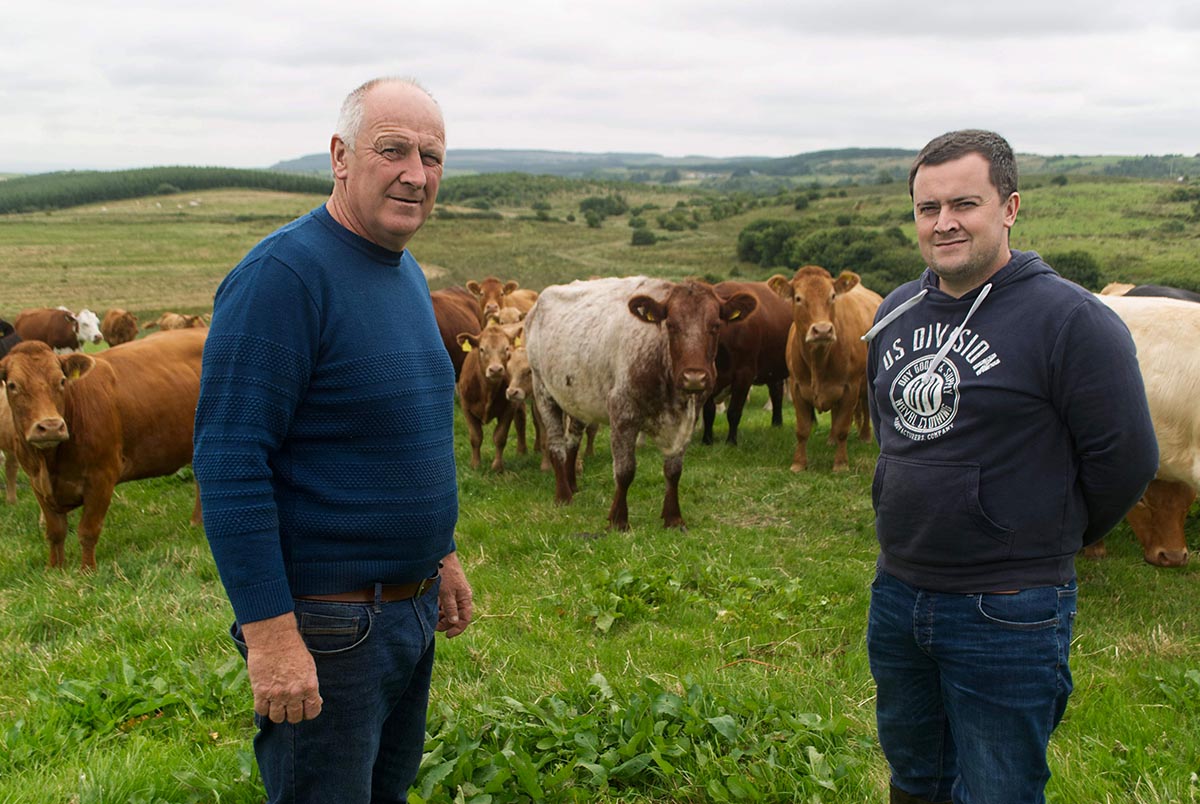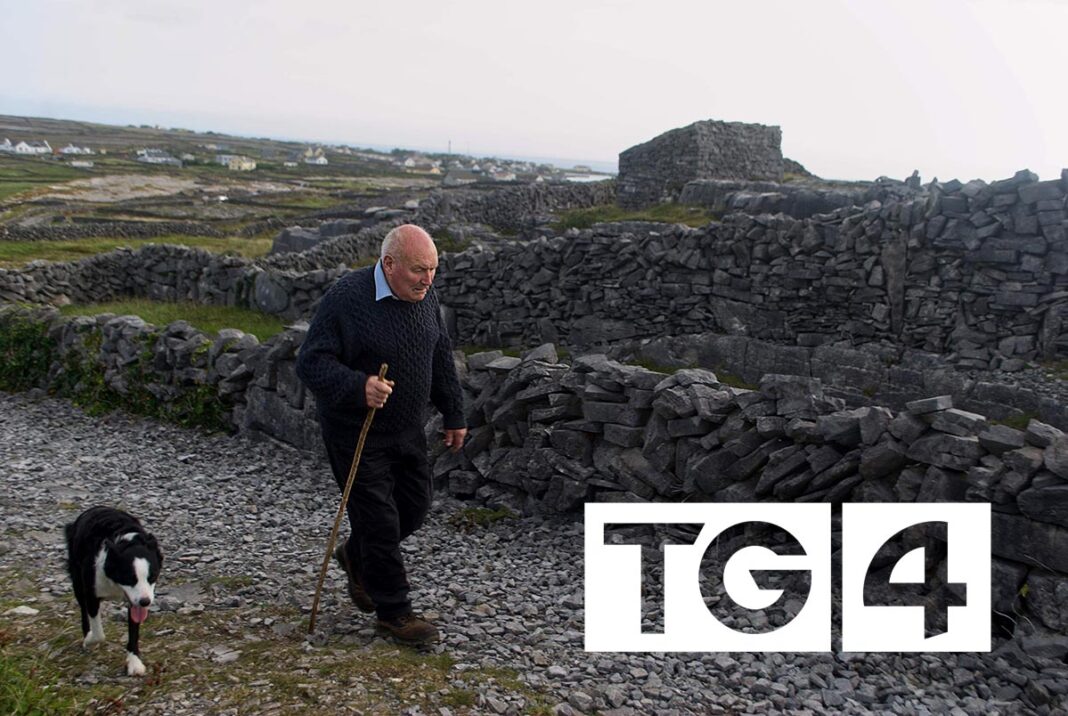In a new TG4 series from IWR Media, Caomhnóirí na Talún, we follow five farmers over the course of a year as they farm with nature including in Co Clare.
From an extensive suckler farm on Inis Mór island to the karst beauty of the Burren to the dairy heartland of east Cork to an arable farm outside Maynooth in Kildare, our cameras follow as these farmers create and conserve habitats on their farms, pioneer new ideas and try to find a way to protect wildlife and their living.
Among these farmers are full-time teacher and part-time farmer Eoin Collins, who farms a suckler beef herd with his dad Michael in Kilfenora, Co. Clare where traditional farming practices maintain the rich flora of their Burren land. Eoin is a teacher and farms part-time alongside his younger brothers and full-time farmer dad Micheal. Eoin and his wife Mary-Kate have built their home on the farm and are now raising a young family here so are committed to this life and place.
The Collin’s farm was one of the first to get involved with Burren Life and like their neighbours, Eoin and Michael have done a lot to protect the biodiversity of their Burren land, from scrub clearance – mostly hazel and blackthorn – to continuing the traditional if labour intensive farming system of winterage. Here, Eoin and Micheal’s cattle overwinter on the species rich limestone of their Burren farm, spending winter outdoors, come rain or shine. This winter grazing prevents competitive species taking over, while the absence of cattle in the summer allows the orchids and other flowers to flourish. As we discover in the series, this world renowned habitat with it’s unique diversity of species from Siberian flora sitting alongside Mediterranean plants, depends on farmers like Eoin continuing this winter grazing tradition.
Over the course of a year, our cameras follow five of these farmers as they create habitats like ponds, nettle patches or bee scrapes on their farms. As they let their hedgerows grow, blossom and fruit. As they discover treasure in the fields. As they adopt new farming techniques like mob grazing or no-till to regenerate soil on intensive ground. Or as they keep faith with traditions such as the winterage [winter grazing] that maintain the wildflower beauty of landscapes like the Burren and the Aran islands. All while trying the find a balance between nature and the realities of making a living from farming.

Across the country, we’ve seen catastrophic declines of birds, wild bees and native plants. Even once common birds of our farmland and open countryside like the skylark and kestrel, are now in deep trouble. The intensification of farming and forestry directed by policy and payments over decades, is seen as one of the most significant contributors to these losses – as land use changed, as wetlands and bogs were drained and reclaimed, as pesticide use and chemical fertiliser increased or as grass management changed such as the switch from hay meadows to silage.
As more and more land was brought into production, there was less and less space for wildlife. Yet if biodiversity is to improve, if habitat loss can be reversed or even halted, it is across Irish farmland that change will happen. If it’s to happen, farmers are the ones who will turn this crisis around. And across the country there’s a growing number of farmers who are forging that path and farming with nature.
Pádraic Ó Flaithearta has a small dry stock suckler herd on Inis Mór and like hundreds of farmers across the Aran islands, Pádraic farms traditionally in one of the most unique habitats of machair and species-rich grassland. Journalist and organic farmer Hannah Quinn-Mulligan farms in partnership with her grandmother Catherine on their Limerick farm where Hannah’s been increasing habitats and trialing new farming practices to help nature. Outside Maynooth, Norman Dunne, alongside dad Michael, has switched to a regenerative farming approach which sees him try to rebuild fertility and life in the soil after decades of intensive tillage.
John Arnold and his wife Mary run a dairy farm in Bartlemy, east Cork and are part of the flagship farmer-led B.R.I.D.E project [Biodiversity Regeneration in a Dairying Environment] co-founded by farmers Donal Sheehan, Paul Moore and Tony Nagle. Donal Sheehan features in this series. Donal has done a lot on his land to increase biodiversity; planting trees and wildflower strips for bees along the margins, stopping the use of rodenticides, letting hedges grow up, putting in nettle patches for butterflies.
An IWR Media production for TG4 © 2024 with funding from Coimisiún na Meán.
Caomhnóirí na Talún is Written & Directed by Mary Brophy. Co-Directed & Produced by Neal Boyle.
